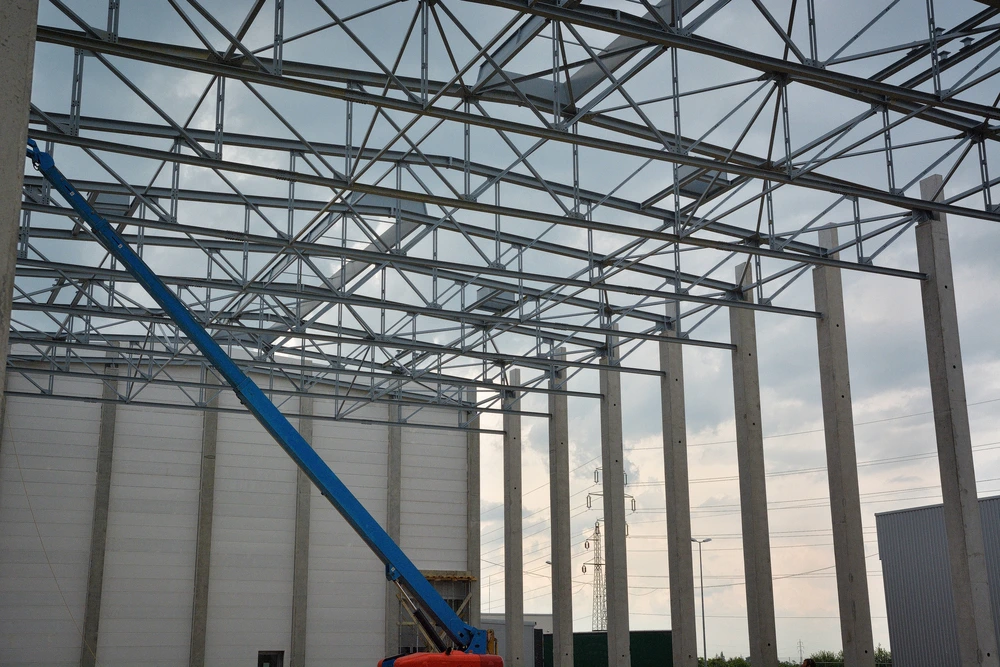Get Support
+91 9099658882
Future Trends in Steel Structures: Advanced Materials & Construction Techniques
Steel has been the backbone of modern construction for over a century, and it shows no signs of slowing down. As the construction industry moves toward more innovative, sustainable, and efficient solutions, steel structures continue to evolve with new materials and advanced construction techniques. At Karnavat Consultant, we specialize in pushing the boundaries of what's possible in steel structure design. In this article, we explore the future trends in steel structures, from advanced materials to cutting-edge construction methods.

The Importance of Steel in Modern Construction
Steel remains one of the most popular building materials due to its strength, durability, and versatility. It can be used in various types of construction, from residential buildings to large industrial complexes. Compared to other materials like wood or concrete, steel offers unmatched load-bearing capacity, resistance to harsh environmental conditions, and longevity.
Advanced Materials in Steel Structures
The future of steel structures is being shaped by the development of new materials that enhance performance, durability, and efficiency.
High-Performance Steel Alloys
One of the key trends in the industry is the use of high-performance steel alloys. These materials offer superior strength, corrosion resistance, and flexibility compared to traditional steel. These alloys are designed to withstand extreme environmental conditions, making them ideal for large-scale projects such as bridges, skyscrapers, and offshore structures.
Galvanized and Weather-Resistant Steel
Weather-resistant steel, also known as COR-TEN steel, is another innovation changing the landscape of steel construction. This type of steel forms a stable rust-like appearance after exposure to weather, eliminating the need for painting or surface treatment. It's ideal for outdoor structures where durability and minimal maintenance are critical.
Construction Techniques for Steel Structures
Innovations in construction techniques are making steel structures faster, cheaper, and more efficient to build.
Prefabrication and Modular Construction
Prefabrication is one of the biggest trends in steel construction. In this method, steel components are manufactured off-site in controlled environments, ensuring higher quality and reducing on-site construction time. Modular construction takes this a step further by assembling entire sections of a building in a factory, allowing for faster project completion and reduced labor costs.
3D Printing in Steel Construction
3D printing technology is making its way into steel construction, allowing for the creation of highly complex and customized steel components. This technique can significantly reduce material waste and increase the precision of structural components, pushing the limits of what’s possible in design.
Digitalization and Automation in Steel Construction
The digital revolution is transforming the construction industry, and steel structures are no exception.
Building Information Modeling (BIM)
Building Information Modeling (BIM) is a digital tool that allows architects, engineers, and contractors to collaborate in real-time on a 3D model of a building. BIM enhances precision in steel structure design, optimizes material usage, and helps identify potential issues before construction even begins.
Robotics and Automation in Construction
Automation is reshaping how steel structures are built. Robotics are increasingly used for welding, cutting, and assembling steel components, reducing human error and speeding up the construction process. This technology is particularly beneficial in large-scale projects where precision and efficiency are paramount.
Sustainability in Steel Structures
Sustainability is becoming a core focus in construction, and steel structures are leading the way in this regard.
Recyclability of Steel
Steel is one of the most recycled materials in the world, making it a highly sustainable option for construction. Over 90% of the steel used in construction can be recycled at the end of a building's life, significantly reducing the environmental impact.
Energy-Efficient Construction Practices
Energy-efficient construction practices are becoming the norm in the steel industry. Energy savings can be achieved through improved insulation, advanced glazing systems, and solar panels integrated into steel structures. These advancements not only reduce the building's carbon footprint but also lower operational costs in the long term.
Smart Steel Buildings
Smart technology is being integrated into steel structures to create buildings that are not only strong and durable but also intelligent. From automated lighting and heating systems to smart sensors that monitor structural integrity, steel buildings are becoming more connected and efficient.
Hybrid Construction Techniques
Combining steel with other advanced materials, such as carbon fiber or glass-reinforced polymers, is another trend shaping the future of construction. Hybrid construction techniques allow for more creative architectural designs and improve the overall strength and durability of structures.
Steel Structures in High-Rise Buildings
The trend toward urbanization and the demand for taller, more efficient buildings is driving innovation in steel structures for high-rise construction. Steel's high strength-to-weight ratio makes it the go-to material for building skyscrapers and other megastructures.
Challenges and Opportunities in Steel Construction
While steel offers many advantages, it also comes with challenges, such as thermal conductivity and susceptibility to corrosion. However, with the advent of new materials and techniques, these challenges are being addressed, opening up new opportunities for innovation in the field.
Conclusion
As future trends in steel structure design continues to evolve, the future of the industry lies in the adoption of advanced materials and cutting-edge construction techniques. At Karnavat Consultant, we are at the forefront of these innovations, offering our clients the latest in steel design technology. Whether you're looking to build stronger, more sustainable structures or seeking cost-effective and efficient construction solutions, we are your partner in shaping the future of steel structures.
By staying ahead of the curve, Karnavat Consultant ensures that your projects benefit from the most innovative and reliable steel construction methods available today.
Looking for a Structure Consultants in India?
We can help you to find best Structural Consultant




